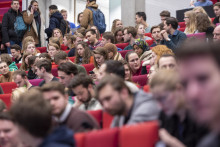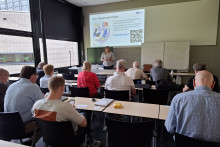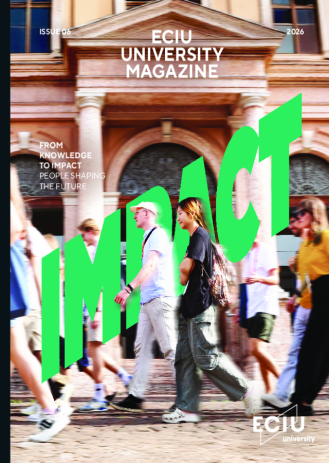The Dutch Centre for Laser Research (NCLR) has netted its JSF-order. Last week the American jet engine builder Pratt & Whitney announced that the NCLR, which is located on campus, will supply the laser that will drill cooling holes in the engine of the Joint Strike Fighter.
According to director Huub van Heel supplying the drill is expected to bring in several million euro for the NCLR, in which besides the UT, Urenco, the Innofonds and Stork participate. The high-speed laser drill from Enschede will be used to drill more than a million cooling holes in each JSF-engine, Pratt & Whitney stated in a press release. Van Heel expects that in future civil aviation will also start using the Twente holes. Most other laser drills burn these kind of holes one by one, which delays the production process considerably. The campus drill is capable of precision-drilling multiple holes simultaneously.
Ed O'Donnell, director of the JSF-project at Pratt & Whitney: 'Normal lasers are rated between thirty and one hundred watt, the NCLR-laser is one thousand watt.' The high drilling speed will reduce the cost of each hole considerably, according to the global world leader in the airplane engines.
NCLR-director Huub van Heel is pleased. 'We are happy to be chosen to supply our pioneering technology to Pratt & Whitney. The JSF already offers large industrial opportunities for the Dutch aerospace industry. It is an extremely capable and also cheap aircraft with enormous international sales potential.'
Two weeks ago the staff of the Dutch Royal Airforce visited the NCLR. The people from the military studied the fruit of 12 years of research and development.







